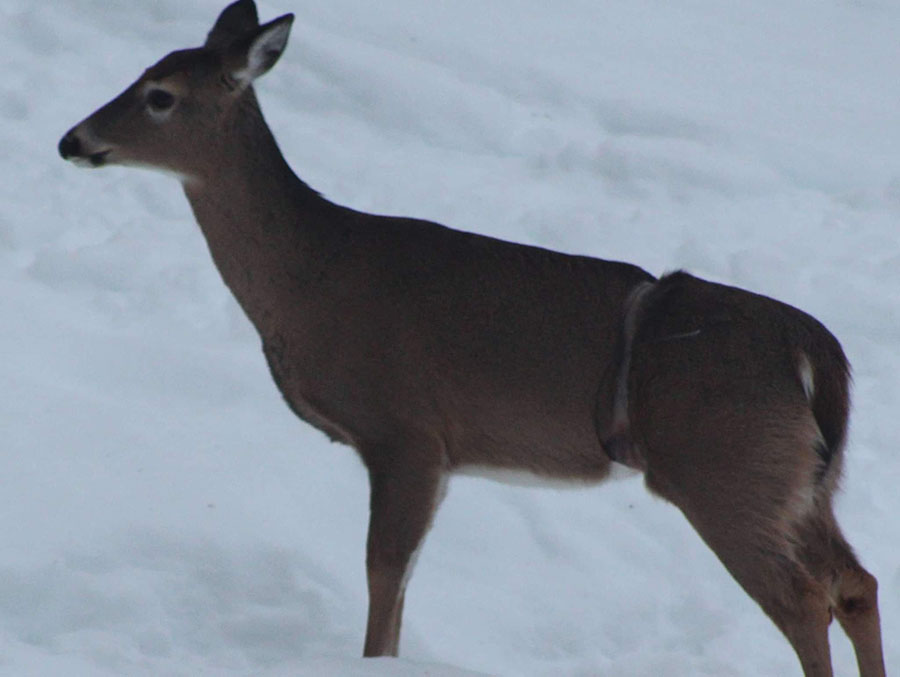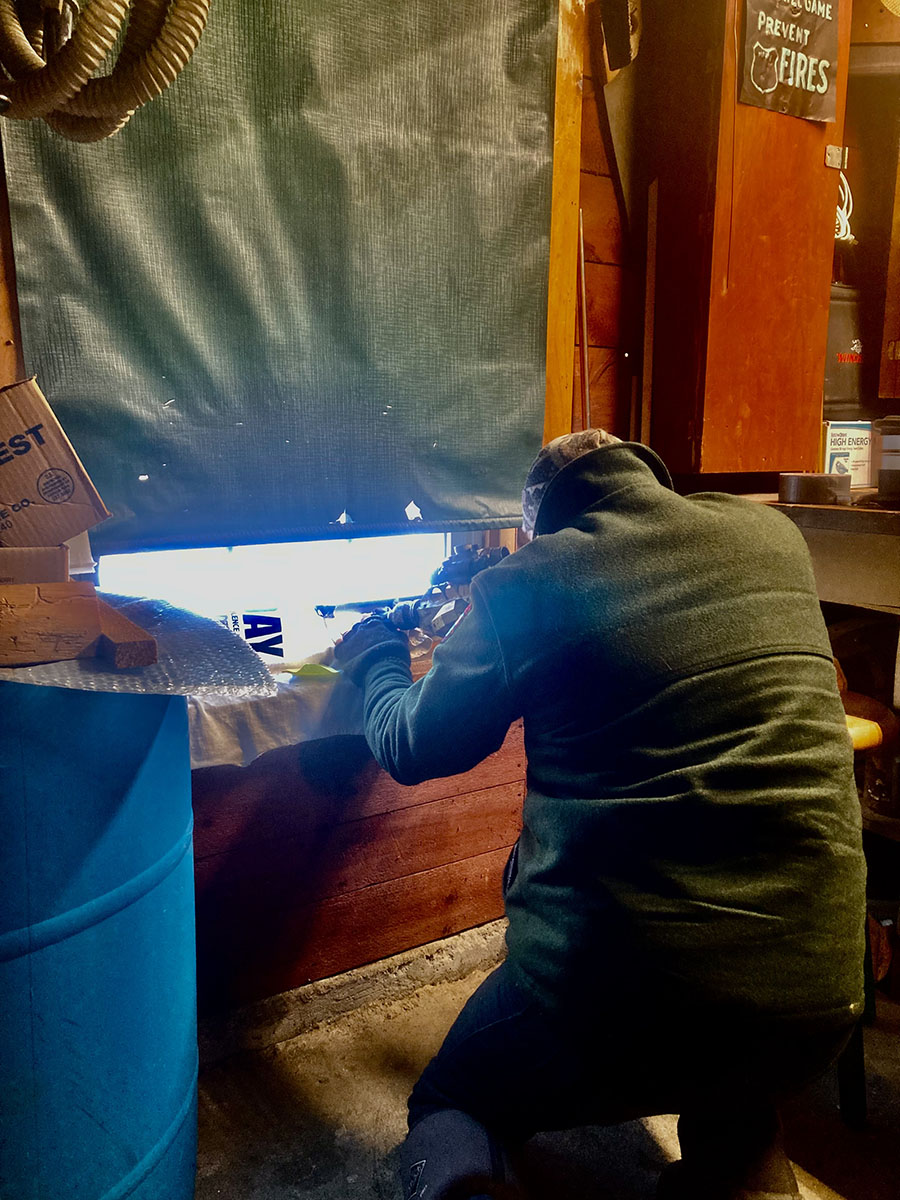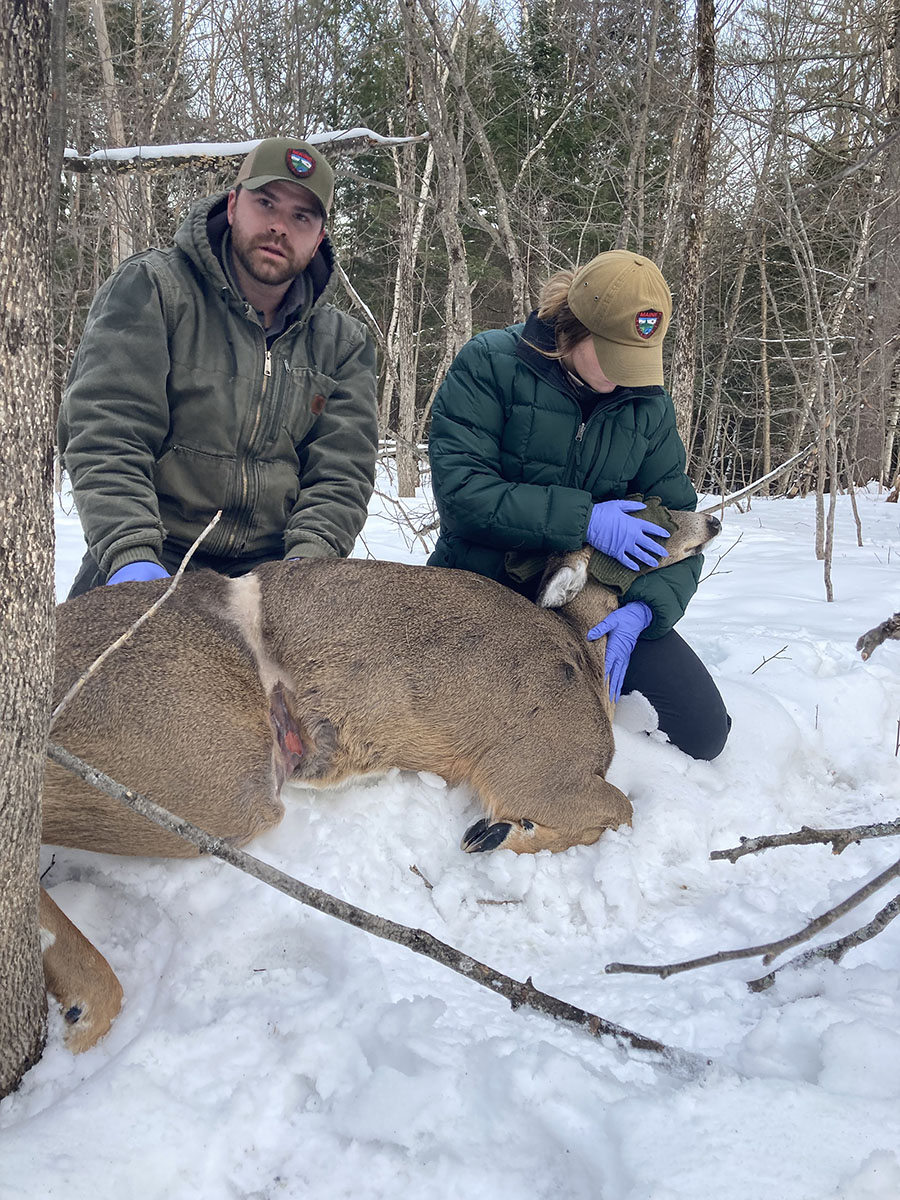March 29, 2022 at 4:50 pm
Wild animals occasionally find themselves in predicaments, stuck in locations, or tangled in things where they don’t want to be. Often, the people reporting these animals only catch a brief glimpse and have no idea where the animal went, or the animal runs away from the would-be rescuers (wildlife professionals) making it difficult to help resolve the situation. Sometimes we get lucky, and the right conditions line up to help change the outcome.
Recently, I received a phone call from someone who’d seen a doe with a cable cinched around her waist. It wasn’t clear from the pictures what it was, but it had worn off a band of hair, rubbing against her as she walked. Other than the missing hair, she appeared healthy and was spending her time with a group of deer frequently seen around the neighborhood. Although the doe appeared healthy, there was concern that the cable could continue to tighten and affect her survival so we tried to see if we could intervene.

Despite what you see in the media, we can’t always capture these animals to resolve the situation, but this doe was well patterned with a regular schedule, showing up at the same location every day. Several residents in the neighborhood had been keeping an eye on her, which helped the biologists narrow down her location each afternoon. Knowing where and when the doe would show up allowed biologists to station themselves in the basement of a gracious homeowner and wait for the doe to walk by.
A dart projector is one of several tools we occasionally use to help resolve these types of situations. Ours is like a paintball gun, but shoots darts that inject immobilizing drugs into the animal. Sedating an animal always comes with some risk for the animal. When the dart hits an animal, it can take several minutes for the drug to take effect. During that time, an animal can travel far or sometimes get themselves in a tricky situation, like laying down in a stream, or a steep ravine. We carefully consider the surrounding landscape for potential risks, before sedating any animal.

Following her regular afternoon circuit through the neighborhood, the doe walked within range of the dart projector and we able to successfully dart her. Once the dart hit, she fled for the tree line and we watched the direction she traveled and waited, giving the drug a chance to take effect. A few minutes later, we followed her track into the trees and found her quietly laying in the snow. We quickly snipped the piece of old fencing wire from her, looked for additional injuries and gave her a reversal drug to bring her out of sedation. Within a couple of minutes, she popped up and trotted off to rejoin her herd.

We occasionally get reports of animals wearing strange items. It’s hard to imagine how these animals get themselves in these predicaments. Unlike this doe, most wild animals are not well patterned and predicting where they will be to try to dart them is impossible or unsafe. Sometimes these animals will wear these items for years, living their lives somewhat unaffected by their baggage. It’s not always possible to intervene and remove these items but in this situation, a well patterned doe, and a willing homeowner led to a good outcome.
If you find wildlife you believe might be injured, sick, or orphaned, always contact a wildlife professional before you take any action. Good intentions can lead to negative consequences (sometimes death or loss in quality of life) for wildlife if not done properly, and can put you, your family, and your pets at risk. Learn more at mefishwildlife.com/livingwithwildlife